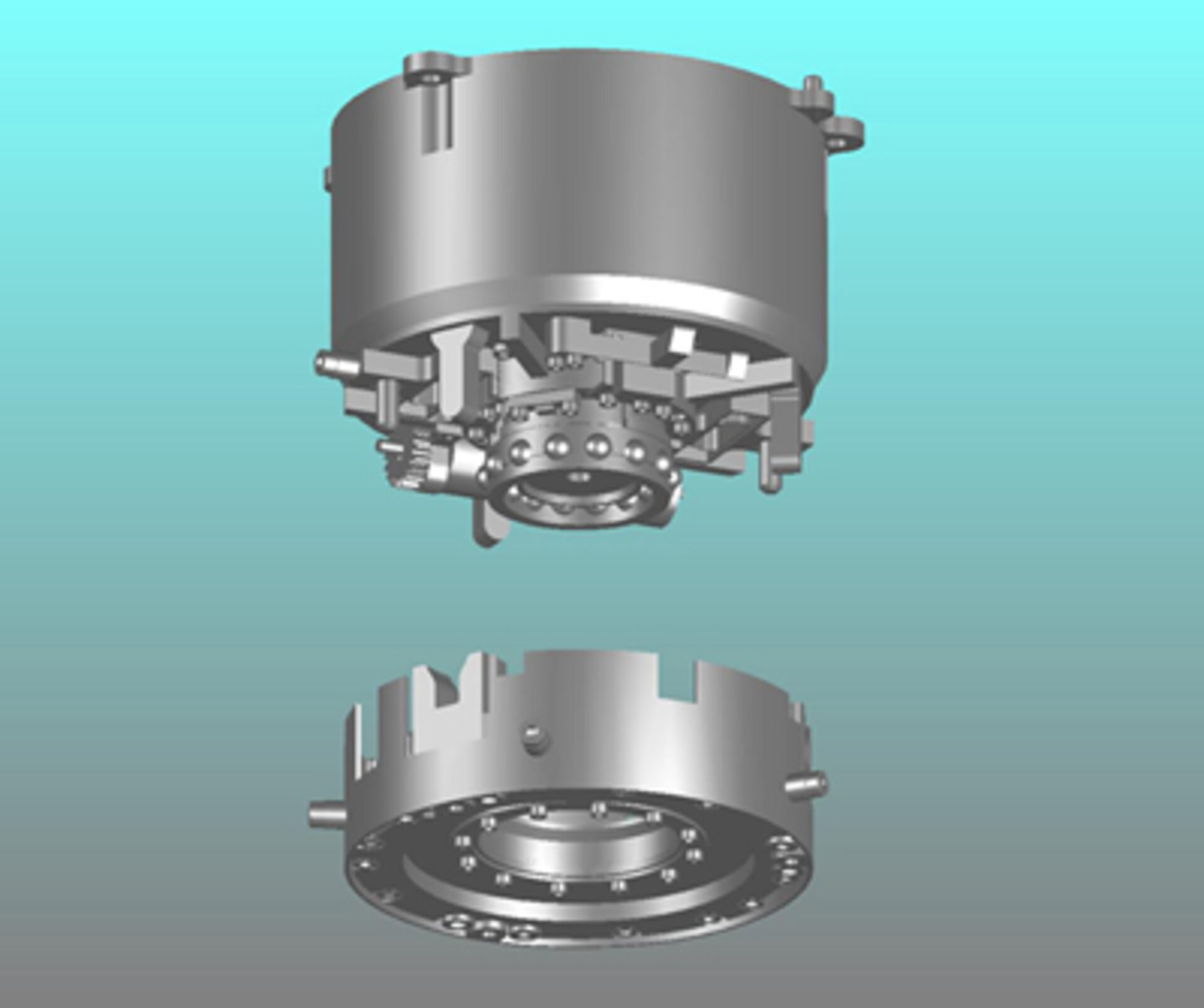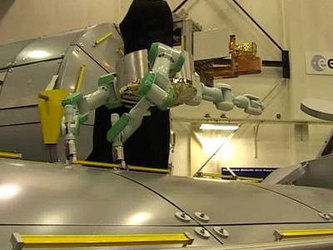Compact tool exchange device
Robotic capabilities planned for extra-vehicular activities on the International Space Station and for planetary exploration require the use of a variety of tools, each designed to be used for a particular task. To allow a single robotic arm to install and uninstall the selection of tools required to perform a given task, a suitable interface is required at the end of the arm.
The development of the Compact Tool Exchange Device (CTED) is one of a number of research and development activities that will prepare technologies for Eurobot, a three arm robot complementary in capability to a human being engaged in Extra-Vehicular Activity (EVA).
Eurobot will be used for extra-vehicular operations on the International Space Station, for example: moving along the space station structure using standard EVA interfaces, execution of, or provision of support to, routine EVA tasks, and replacement of Orbital Replacement Units (ORUs).
CTED enables the exchange of end effectors or tools, while allowing control signals and electrical power to pass from the arm to the tool. It consists of two types of components, one active unit, fixed to the robot arm, and several passive parts, fixed to the different tools and end effectors.
The intention is that, once the tool is properly positioned within the reach of the arm, CTED should be able to automatically perform the attachment and release of the tool and the mating and de-mating of the electrical connections from the robot to the tool. CTED provides alignment features that help guide the robot arm into the correct position and orientation for latching.
For the planned operational scenario, the most important aspects of CTED development are:
- minimisation of on-board resource usage – requiring a compact, low mass design
- safety of the tool exchange operation – no inadvertent release of objects
- high strength – to allow stable grip of tools during operations
- wide capture range – to allow the robot arm to compensate for initial misalignment prior to capture and locking
| capture range | dependability |
| loads | safety |
| release / grapple cycle time | manual release mechanism |
| mass | actuation mechanism |
| power | space environment compatibility |
| volume | technical risk / cost |

The final design is a combination of two of the initial concepts, using a tripod-like mechanism for capture and alignment and a linear motion system that pushes outwards a set of balls for actuation and locking.
Mating of the CTED to the tool interface is actively performed by a brushless motor. The motor moves a piston that in turn positions the locking balls to apply a pre-load to a pre-load spring. Once the mating and locking is performed, the forces applied to the end-effector of the robot arm are transferred completely through a rigid load-path. The CTED actuator is then load-free.
Another important aspect of the CTED coupling process is connector mating. This is only performed once all rotational offsets between the tool interface and the robot have been eliminated. This prevents connector jamming.
When the tool interface is being stored in a tool tray, the robot can only withdraw from it once the interface has been safely installed in the tray.
In any situation, the CTED can also be manually overridden (opened or closed) by an astronaut.




